Too bad there's no message icon for "thumbs way up," in Siskel & Ebert parlance: this course gets it. Played here on the strength of postings from Lawrence Largent and Michael J Fay. The people who contribute to this website are invaluable!
The club opened in 1929. The founders of the club went to Donald Ross and offered him a choice of three properties. How awesome is that? Ross selected this site for its views and topography. Club officials today say Ross spent a decent amount of time on the property. This was no drive by.
Over the years the course conditions deteriorated to the point where members could putt out of some bunkers, a far cry from "3-foot-six."
Then one day Kris Spence stopped in and asked if he could walk the course. He was in the process of "restoring" Grove Park Inn over in Asheville, and frustratingly very little documentation of that course could be found at the Inn or the Tufts Library a few counties over in Pinehurst.
Of such coincidences do great conclusions sometimes arise: a practicing architect, in the process of restoring a Ross course, stops at a course that happens to be on his route. He discovers a true -- no, really, a
true -- Ross gem that could be really something if brought back to its earlier state.
The club knows opportunity when it sees it, hires Spence, who discovers unlike GPI there
is a record, evidence, of the original course.
And he sets to work. Sticklers might call it a not-a-true restoration: several new tees were built, including a few that were raised, something I'm not sure counts as "Ross." Michael Fay posted on here a while back (post resto) saying this course is one of the best-preserved Rosses out there. And it's the green complexes you've got to see here, and those I understand are very, very true to Ross.
Some time ago Lawrence Largent posted on here asking whether the bunkers were really Ross; the answer based on old photos in the club's possession is, "absolutely." Spence calls them "bull noses." Over the years, maintenance practices literally de-nosed them, transfiguring beautiful sinuous bunkers into unimaginative rectilinear things.
Here we go...
The course starts slowly, the first four holes suffering in comparison to what's to come. But this stretch does include signature Ross holes of "Straight & and Uphill" and "Up & Over."
The 1st hole is a round-easing opener; it might not pass Ran's test of "makes you want to play golf" but it doesn't get a failing grade, either. (If somehow we could tack the first four holes of Southern Pines onto Mimosa Hills...)
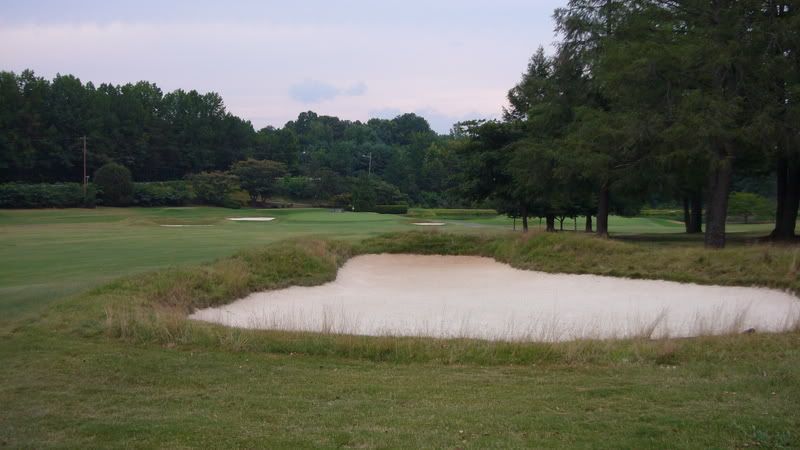
The 2nd is a short, straight uphill par 4.
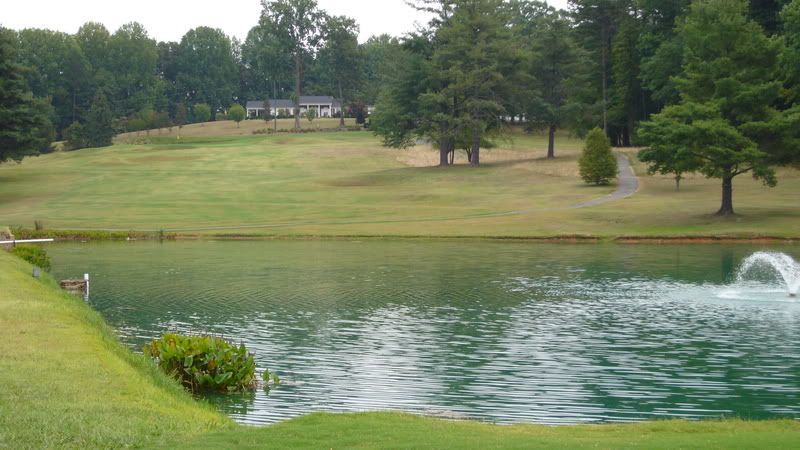
The green complex gives us a foreshadowing of what's to come.
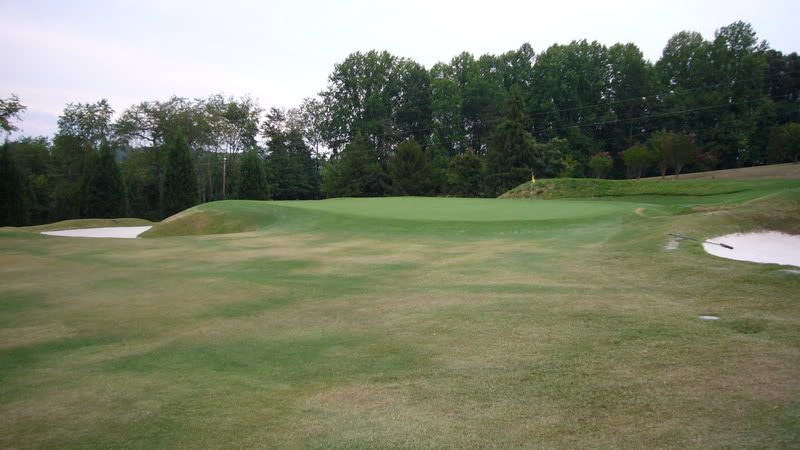
The 3rd, like all par 5s here, is more a par 4.5. It starts with that wonderful Ross trait of "up and over." Best to start left of the clubhouse roof.

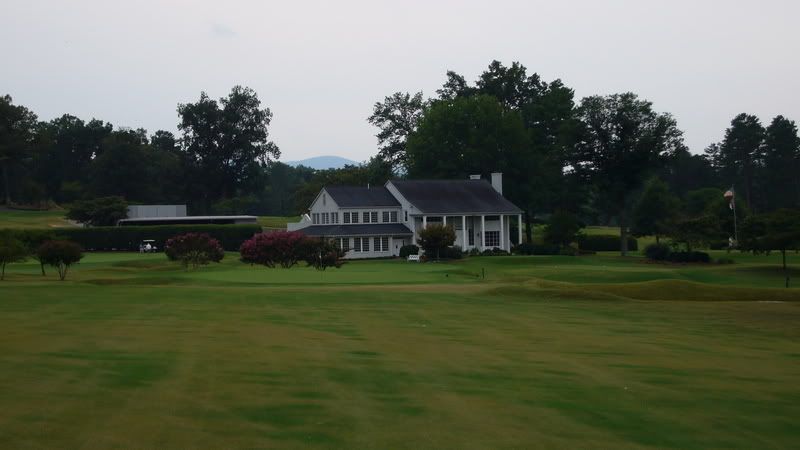
So Ross returns us to the clubhouse after just three holes -- fascinating routing in that the golfer never will be far from the clubhouse. If he wishes, he can join his companions on the tees of 1, 4, 6, 10, and 13, without walking more than 50-60 yards from the parking lot. Highly unusual in the world of golf!
The 4th hole...
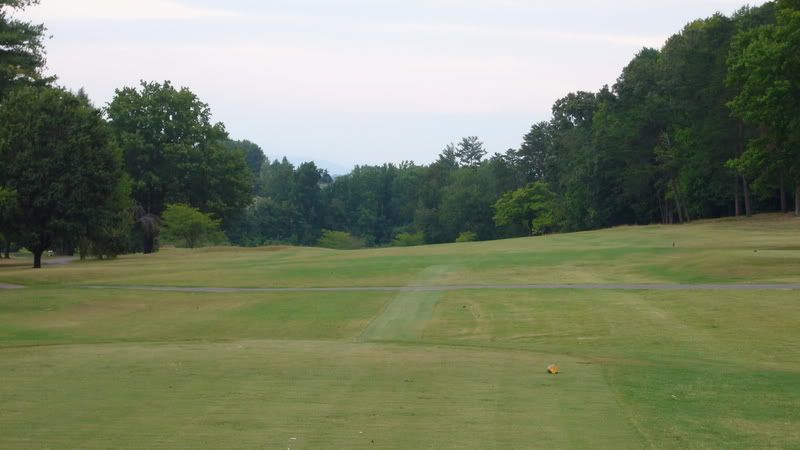
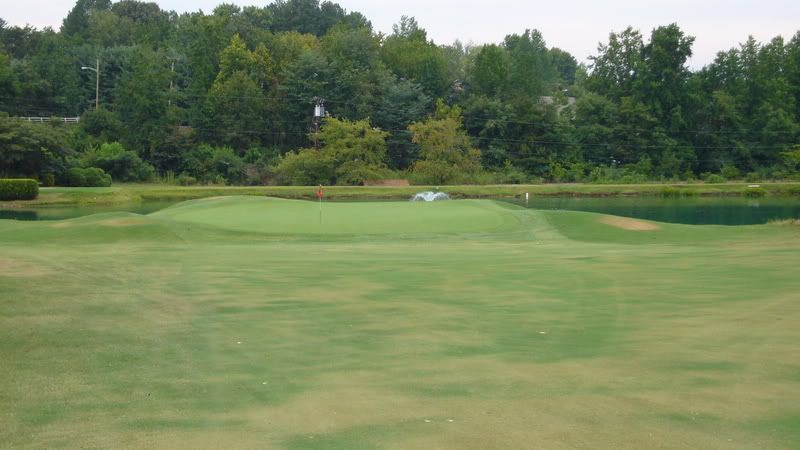
The 5th is a dogleg left hole with a collection of raised bunkers in the bend. Prior to Spence's tree removal, these bunkers were not visible from the tee; looking at before and after photos one might think Spence put in the bunkers. Which, in a way, he did.
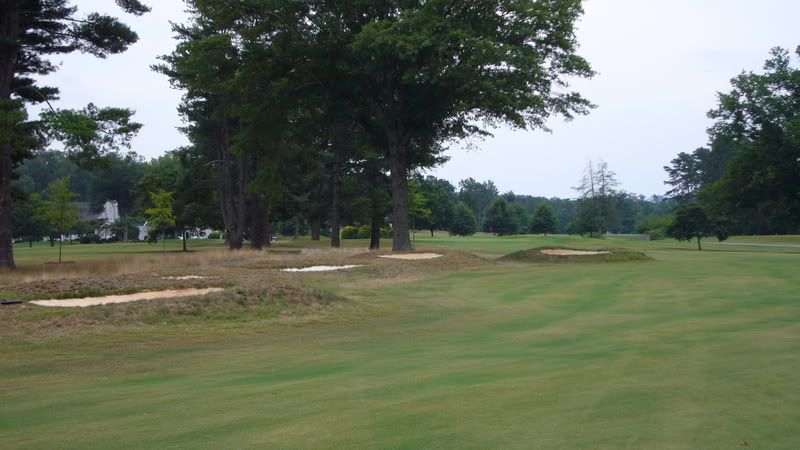
The greenside bunkers give the golfer the first real taste of their utility. Shots hit a hair wide of the green carom in. Shots hit to the bunkers' far sides either carom in -- or bounce
farther away from the hole. Given the tilt of the greens and the penal depth of the bunkers, this is a difficult shot indeed.
5th green and bunkering:
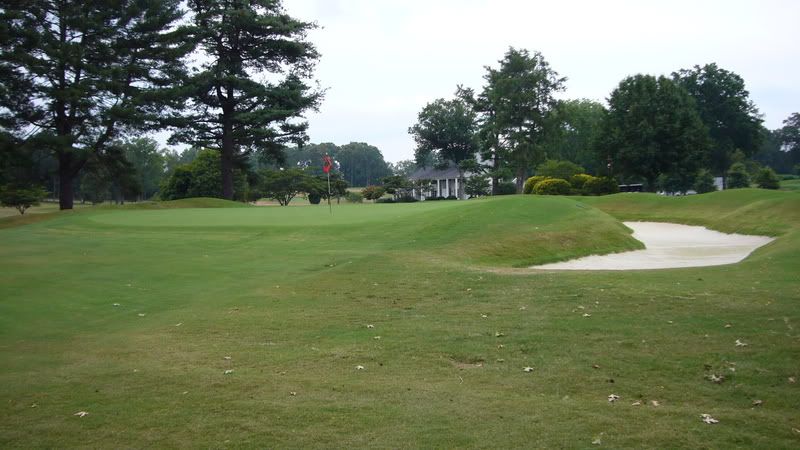
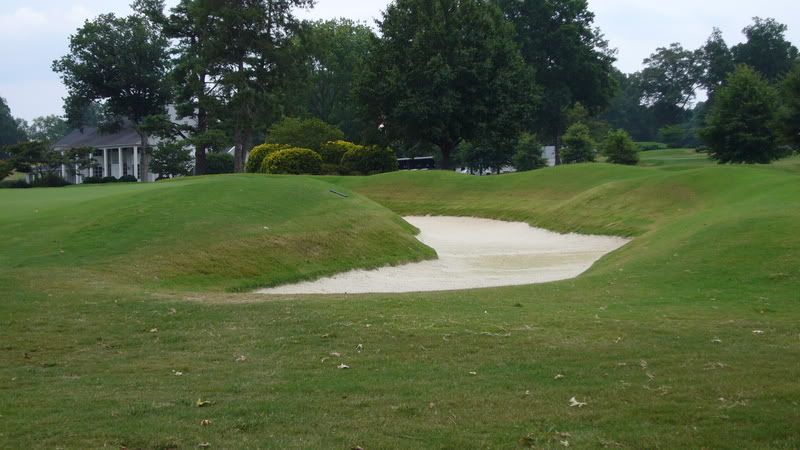
The 6th is the first par 3 and a challenge. Well bunkered and raised, the golfer must find a way to hit and hold this green. In summertime, firm-and-fast conditions that is no small challenge!
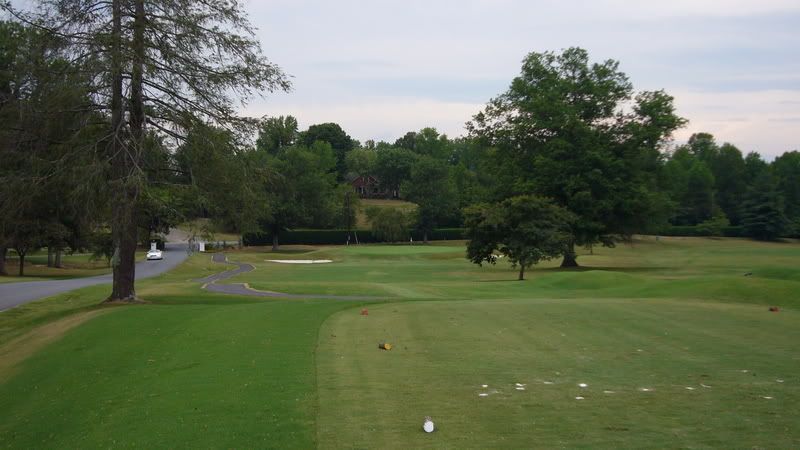
The 7th hole is described
here.More later,
Mark